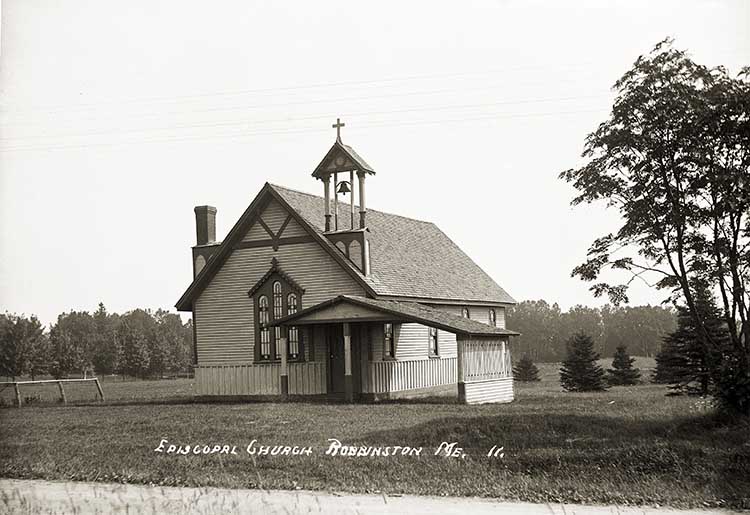

Grace Chapel is a classic example of a 19th-century rural American church. It was built in1882 by Rev. Peter Henry Steenstra. A longtime summer resident of Robbinston, he and several other summer residents decided to build a church in the village for summer services. He acquired the land in 1875 from James S. Pike, who lived next door at the Mansion House.
The cost of building the church was $1417.55, including $75 for the lot, $992.72 for workers and construction materials, and $349.81 for the furniture. It has open beams and boards, all clear stained except for a red stripe on the smoothed corner of each beam. The original oil lamps are mounted on swing brackets along each side, and three brass chandeliers hang down from the ceiling. The church has never been wired for electricity. The original woven palm mats still cover the floor. The original pump organ still plays well, and the lectern, which originally was an architectís adjustable drawing table, stands nearby. The first service was held in October 1882 with Rev. Peter Henry Steenstra presiding. His son, Fredrick Steenstra, was the primary minister for most of the chapelís active years.
The last church service was held on August 29, 1993. In early 2000 the Steenstra family persuaded the Episcopal Church to turn the facility over to the Robbinston Historical Society. In June of that year the church was deconsecrated, and in 2001 it was listed on the National Register of Historic Places. It is now a museum.
Caption written by Mary Ann Duvall and published in the Penobscot Marine Museum Reader, Catalog Number LB2007.1.114397